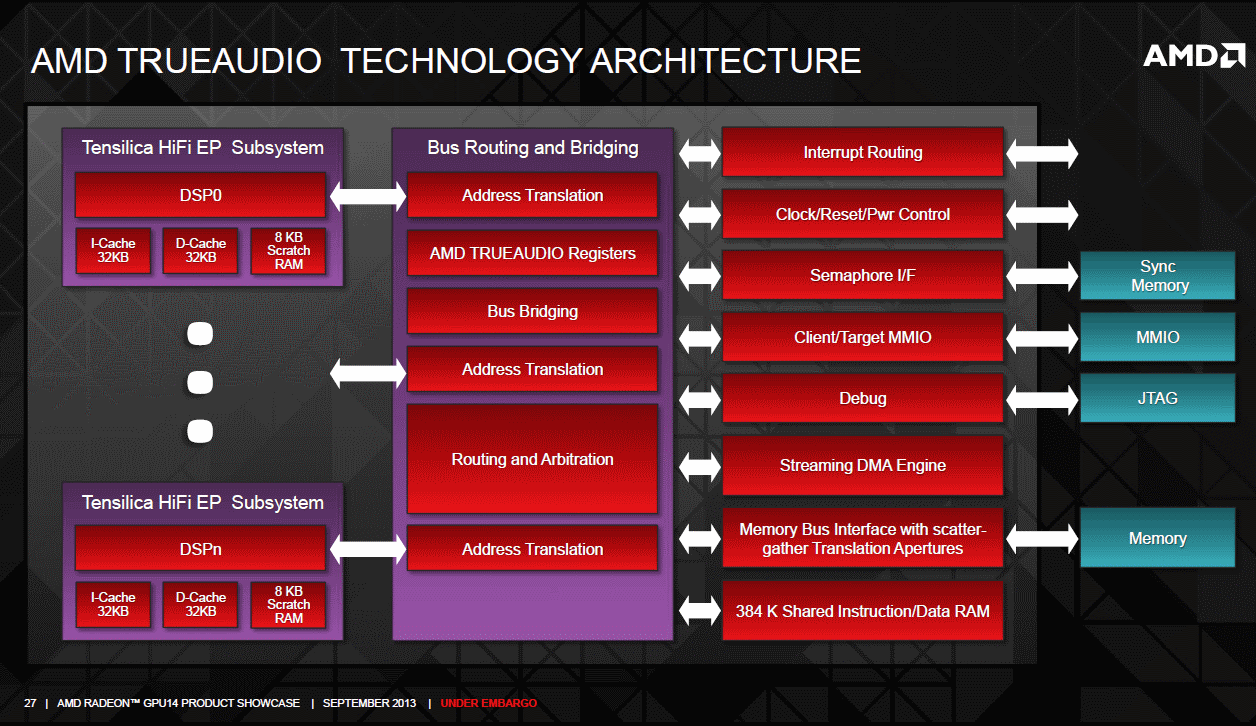AMD TrueAudio - Graphics is only half of the picture
Although we will be covering TrueAudio in a dedicated review, especially when the software is ready this chapter serves as an overview.
During AMD’s GPU14 Hawaii webcast, the firm did not make it clear how it would actually enable its TrueAudio technology, they only disclosed what it would do.
We initially speculated that Hawaii would use the power of GCN’s compute capability to process 3D positional audio using OpenAL as was the case with Creative SoundBlaster and NVIDIA SoundStorm, plus Apple devices.
The launch middleware for TrueAudio was AstoundSound. This system, according to its developer is a fully software based solution so GPU compute made sense initially. The only caveat here would have been slowdowns or resource wastage when processing audio. A secondary factor leading us to this conclusion was the extensive positional audio keynotes made last year at AMD’s developer’s conference.
We can now reveal that 260X and 290X cards do indeed contain hardware DSP cores for processing audio, Tenscilia’s Hi-Fi DSP product that AMD has used in multiple within the GPU. DSP calculations are CPU intensive and GPU compute may have been sufficient in hindsight.
The Hi-Fi DSPs combined with various 3D Audio middleware and the Existing Multi-Display Directional audio present in Radeon GPUs which pipes audio over HDMI or DisplayPort gives the end user a free DSP-based Digital only Sound Card.
For analogue audio output or digital SPDIF out, users utilise their existing on-board or discrete audio solution.
For analogue speakers via HD Audio on-board CODEC this is an acceptable and flexible solution, however the user is limited by the quality of their hardware.
For discrete sound card users using analogue speakers, the software or hardware DSP processing capability of the sound card can be used on top of the incoming AMD TrueAudio processed streams.
However, if AMD TrueAudio is handling processing of game audio via middleware then this renders the gaming specific capability of a DSP sound card such as Creative’s relatively new Sound Core 3D processor ( which utilises ‘quad DSP cores’ ) somewhat moot. The game audio has already been processed and offloaded upstream
It is still early days for this system and it is solely reliant supporting software, unlike a integrated or discrete sound card. Although three games have been announced as supporting TrueAudio: Murderded:Soul Suspect, THEIF and Lichdom, THEIF might be the showcase title thanks to is environment

The TrueAudio system can access up to 64 MB addressable space in frame buffer, similar to how Creative's X-Fi could utilise its own DRAM for audio processing.